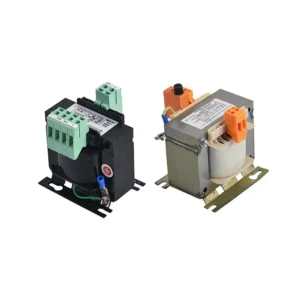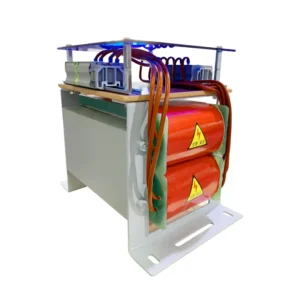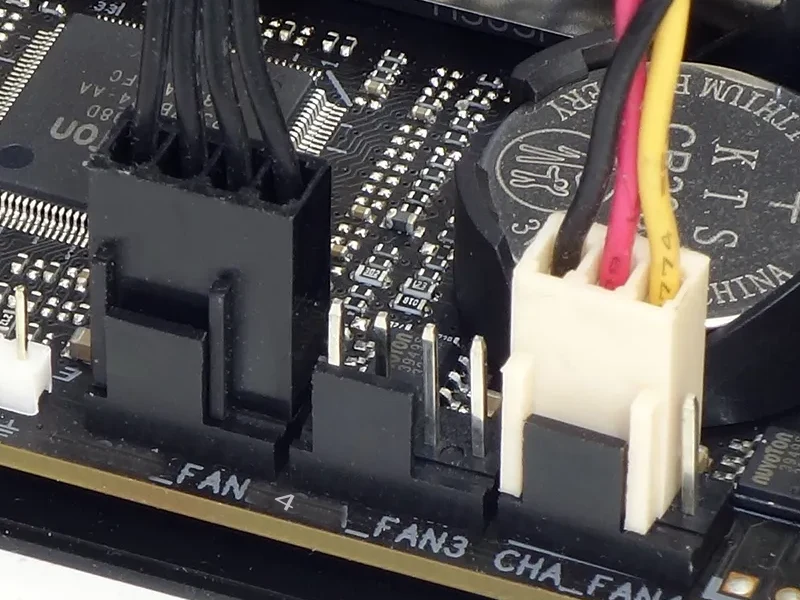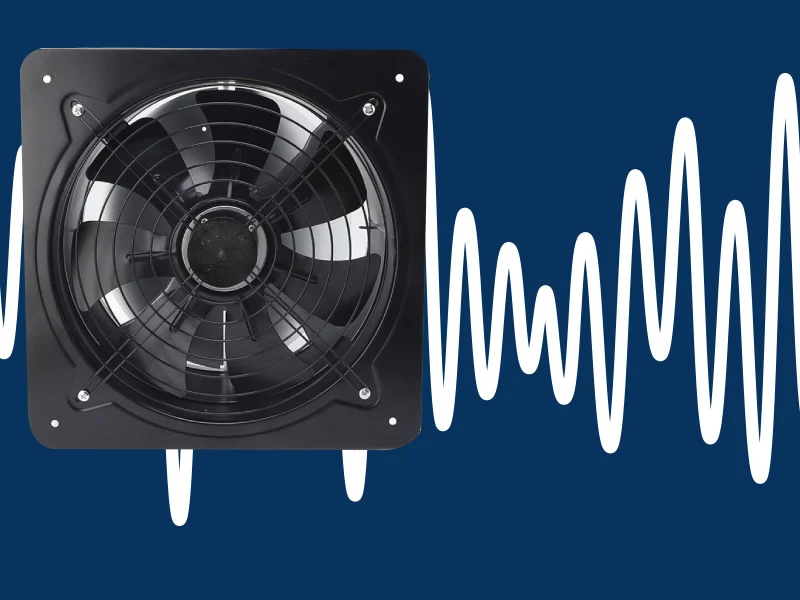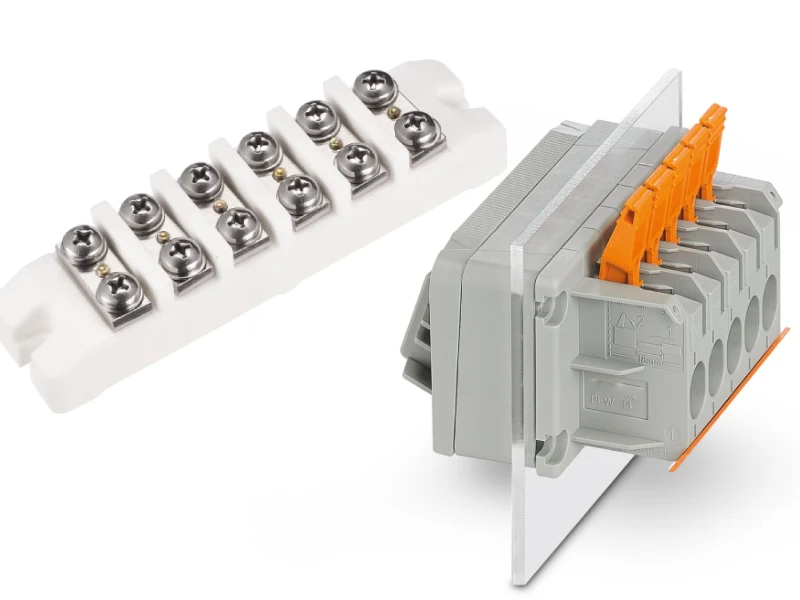Choosing the right transformer can feel overwhelming, especially when you want your industrial systems to run smoothly. You need to consider more than just voltage and power. You also have to think about inrush current, temperature, environmental conditions, size, mounting, efficiency, standards, and even future expansion. With so many factors in play, the Cabinet Transformer VS Control Transformer decision becomes crucial. Take a moment to think about your control cabinet’s unique needs as you read on.
Key Takeaways
- Cabinet transformers distribute power within cabinets, while control transformers provide stable voltage for sensitive control circuits.
- Choose the right transformer size to avoid overheating or wasting energy; aim for a load between 50% and 75% of the transformer’s capacity.
- Consider environmental factors when selecting transformers; ensure they meet safety standards and are suitable for your specific industrial conditions.
- Plan for future expansion by selecting modular transformers that can adapt to growing operational needs.
- Always verify certifications like UL and CE to ensure your transformers meet safety and performance requirements.
Cabinet Transformer vs Control Transformer: Key Differences
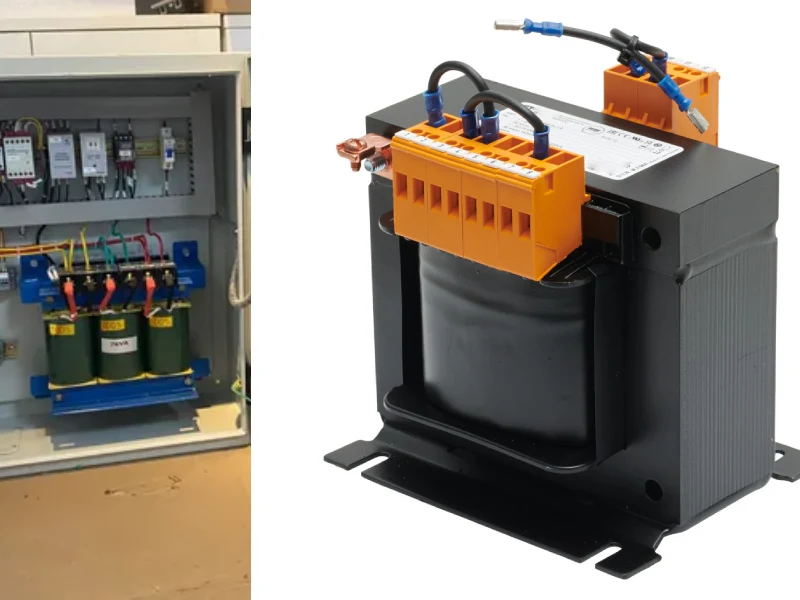
Core Functions and Applications
You might wonder what sets cabinet transformers apart from control transformers. Both types of electrical transformers play a big role in industrial settings, but they serve different functions. Cabinet transformers usually handle the main power distribution inside cabinets. They step down or step up voltage for the entire system. Control transformers focus on providing stable voltage for control circuits. You use them to protect sensitive equipment and keep automation running smoothly.
Electrical transformers help you regulate voltage, improve power quality, and boost energy efficiency. When you compare cabinet transformer vs control transformer, you see that control transformers work best for applications that need precise voltage for control panels and automation. Cabinet transformers are better for general power supply inside cabinets.
Design and Construction
Design matters when you choose between cabinet transformer vs control transformer. Cabinet transformers often have a larger build. They fit inside cabinets and handle higher loads. You find them with robust insulation and strong mounting options. Control transformers have a compact design. They focus on delivering safe voltage to control circuits. You see them with high-quality windings and laminated cores for better efficiency.
Let’s look at a quick comparison:
| Feature | Cabinet Transformer | Control Transformer |
|---|---|---|
| Main Function | Power distribution | Stable voltage for control |
| Size | Larger, fits cabinets | Compact, fits control panels |
| Insulation | Heavy-duty | High-grade, efficient |
| Mounting | Flexible, cabinet-ready | Panel or DIN rail |
| Voltage Regulation | System-wide | Precise for control circuits |
You need to match the design to your industrial requirements. Electrical transformers must fit your cabinet space and meet your safety standards.
Recommended products
Typical Use Cases in Industrial Settings
You see cabinet transformer vs control transformer used in many industrial environments. Cabinet transformers supply power to all devices inside cabinets. They keep your system running and support heavy machinery. Control transformers shine in applications where you need reliable voltage for control panels.
Here are some common industrial use cases for control transformers:
- Manufacturing: You automate machines and control motors with stable voltage.
- Telecommunications: You manage backup power and cooling in base stations.
- Water Treatment: You automate pumps and sensors for smooth operation.
Cabinet transformers work well in electrical cabinets for power distribution. Control transformers fit best in control cabinets, telecom systems, and automation panels. Electrical transformers make sure your equipment gets the right voltage and stays protected from surges.
You rely on electrical transformers for voltage regulation and energy efficiency. They help you maintain a stable supply of electricity in your industrial applications. When you choose between cabinet transformer vs control transformer, think about your cabinets, control needs, and the type of equipment you want to protect.
Assessing Industrial Requirements for Transformers
Power and Load Considerations
When you select transformers for your industrial setup, you want to get the load right. If you size your transformer too small, you risk overheating and downtime. If you go too big, you waste energy and money. Most industrial transformers work best when you keep the load between 50% and 75% of their rated capacity. This range helps you balance efficiency, equipment lifespan, and safety.
Here’s a quick guide to help you:
| Operational Goal | Recommended Load Range | Key Consideration Factors |
|---|---|---|
| Peak Operational Efficiency | 50% to 70% | Lowest energy consumption |
| Optimal Equipment Lifespan | 50% to 75% | Slower insulation aging |
| Maximum Continuous Safety | 80% to 85% | Avoids overheating and thermal breakdown |
| Optimal Economic Factor (ELR) | 75% to 90% | Balances running costs and investment |
You should also check the KVA rating. This tells you the maximum load your transformer can handle. For heavy industrial applications, three-phase transformers deliver stable power and reduce downtime. Try to keep your load below 85% to avoid inefficiencies and extra costs.
Voltage, Current, and Safety Standards
You need to match your transformer’s voltage and current ratings to your control cabinet’s requirements. Look for these specs:
| Specification | Description |
|---|---|
| Volt-Ampere (VA) Rating | How much power the transformer can handle continuously |
| Primary Voltage Rating | The voltage you apply to the input side |
| Secondary Voltage Rating | The output voltage you get for your control circuits |
| Frequency Rating | Usually 50 Hz or 60 Hz, depending on your region |
| Temperature Rating | The highest temperature the insulation can handle |
Don’t forget about safety certifications. For industrial transformers, UL and CE marks show that your equipment meets strict safety and performance standards. You might also see CSA or cUL for North American compliance. Some transformers meet RoHS and REACH standards, which means they use safe materials and protect the environment.
Planning for Scalability and Future Expansion
Think ahead when you design your industrial control cabinets. If you expect your system to grow, choose transformers that offer modular or scalable options. Make sure you have enough cabinet space and plan your mounting early. This way, you avoid costly rework down the road.
| Consideration | Description |
|---|---|
| Cabinet Space | Plan for space and mounting constraints |
| Future Scalability | Pick modular or scalable transformers for expansion |
Tip: Always consider your future needs. It’s easier to plan for growth now than to retrofit later.
Environmental Factors in Industrial Control Cabinets
Installation Location and Mounting
When you install transformers in industrial control cabinets, you want to get the mounting right. The location inside cabinets affects both performance and safety. Here’s what you should keep in mind:
- Choose a transformer with the correct KVA rating and insulation type for your industrial control cabinets.
- Place the transformer on a level concrete pad to support its weight and keep it stable.
- Maintain at least 3 feet of clearance around the transformer inside cabinets. This helps with cooling and makes maintenance easier.
- Use lag bolts and check that the transformer sits level. Secure mounting keeps your industrial control cabinets safe.
- If your facility sits in an earthquake zone, add seismic anchors and make sure drainage works well.
You want your transformers to stay secure and cool inside industrial control cabinets. Good mounting helps you avoid problems and keeps your system running smoothly.
Insulation, Cooling, and Protection
Insulation and cooling matter a lot in industrial control cabinets. You need materials that handle high temperatures and keep your transformers safe. Take a look at some common insulation options:
| Insulation Material | Key Properties | Maximum Operating Temperature |
|---|---|---|
| Epoxy Resin | High thermal stability, keeps insulating properties at high temperatures | 130°C (266°F) |
| Aramid Paper | Durable, heat-resistant fibers, great for tough environments | 220°C |
| Silicone Rubber | Flexible and resilient, works well with thermal cycling | N/A |
Linkwell’s control transformers use robust insulation and cooling designs. This protects your equipment from overheating and extends the life of your industrial control cabinets. You also get protection from dust, moisture, and electrical surges.
Tip: Always check the insulation rating before you install transformers in industrial control cabinets. This helps you avoid downtime and costly repairs.
Compliance and Certifications (UL, CE, ISO9001)
You want your industrial control cabinets to meet global standards. Certifications like UL, CE, and ISO9001 show that your transformers follow strict safety and efficiency rules. Here’s how different standards impact your choices:
| Regulatory Body | Standard | Description |
|---|---|---|
| United States | DOE | Sets minimum efficiency standards for transformers. |
| European Union | Eco-design Directive | Defines efficiency requirements under EN 50588. |
| India | BEE | Provides star ratings for distribution transformers. |
| International | IEC/IEEE | Sets benchmark testing and design expectations. |
Linkwell’s control transformers come with UL, CE, and ISO9001 certifications. You can trust them in industrial control cabinets anywhere in the world. These certifications help you meet local regulations and keep your cabinets safe and efficient.
Application Guidance for Industrial Use
Manufacturing and Automation
You work in a fast-paced industrial environment. You need transformers that keep your control systems running smoothly. In manufacturing and automation, transformer applications focus on stable voltage, high efficiency, and safety. You want to match the right specifications to your cabinets. Take a look at this table to see what matters most:
| Specification | Description |
|---|---|
| Voltage Rating | Handles the maximum voltage for both primary and secondary sides. |
| Power Rating | Shows the highest power the transformer can manage. |
| Impedance | Controls voltage drop and short-circuit performance. |
| Frequency | Usually 50 Hz or 60 Hz, affects how your transformer works. |
| Temperature Rise | Limits how hot your transformer gets during operation. |
| Efficiency | Measures how much energy you save. |
| Tap Changing Mechanism | Lets you adjust voltage for different loads. |
You want control transformers that fit your cabinets and meet these needs. This helps you avoid downtime and keeps your automation running.
Power Distribution and Energy Storage
You rely on transformers to distribute power and support energy storage in industrial settings. Power distribution systems send electricity to your machinery. Energy storage systems provide backup and stabilize voltage. Here’s a quick comparison:
| Aspect | Power Distribution Systems | Energy Storage Systems |
|---|---|---|
| Role | Distributes electricity | Provides backup and stabilizes voltage |
| Voltage Requirements | Matches machinery needs | Allows flexible charging/discharging |
| Design Considerations | Focuses on capacity and efficiency | Integrates for stability |
| Maintenance | Needs regular testing | Needs regular inspection |
You get backup power during outages, stabilize voltage, and improve efficiency with the right transformer applications in your cabinets.
Telecom and Signal Systems
You need reliable transformers for telecom and signal systems. These applications demand precise voltage regulation and strong protection. You want your cabinets to house transformers with features like:
| Key Feature | Description |
|---|---|
| Voltage Regulation | Delivers the right voltage to each component. |
| Impedance Matching | Improves signal transfer and reduces noise. |
| Isolation | Prevents ground loops and keeps signals clean. |
| Protection Mechanisms | Shields sensitive parts from surges and faults. |
Control transformers in telecom cabinets help you maintain clear signals and protect your equipment.
Food Processing and Clean Environments
You work in places where safety and cleanliness matter most. Transformer applications in food processing and clean environments require special features:
- Electrical isolation protects both equipment and people.
- Ground fault protection keeps wet areas safe.
- Eliminating ground loops ensures clean power delivery.
- You can safely maintain circuits while keeping primary power live.
- Sensitive equipment stays protected from surges.
- You meet strict safety compliance standards.
You want transformers in your cabinets that meet these requirements for safe, reliable operation in industrial applications.
Choosing the Right Transformer: A Step-by-Step Guide
Decision Checklist for Industrial Applications
You want to make sure you pick the right transformers for your industrial setup. Here’s a practical checklist that helps you avoid headaches and keeps your control cabinets running smoothly:
- Figure out your current and future load needs. Think about how much power your system uses now and how much it might need later.
- Check voltage and frequency. Make sure the transformer matches your cabinet’s voltage and the frequency in your region.
- Pick the right type for your environment. Some transformers work better in hot, dusty, or humid places. Others fit clean rooms or food processing areas.
- Verify quality and testing. Look for UL, CE, and ISO9001 certifications. These show the transformer meets safety and performance standards.
- Ask about lead times and availability. You don’t want your project delayed because the transformer isn’t ready.
- Decide if you need a custom fit. Many industrial applications need special winding, insulation, or mounting options. Linkwell offers customization to match your needs.
- Choose a reliable partner. Work with a manufacturer who supports you with technical advice and fast delivery.
Tip: If you’re not sure about any step, reach out to Linkwell. Their experts help you select, customize, and install the right transformers for your control cabinets.
Here’s a quick look at the customization options you can get from manufacturers like Linkwell:
| Customization Type | Details |
|---|---|
| Power Ratings | From 0.010VA to 30 kVA |
| Winding Configurations | Unique winding setups for special needs |
| Frequency Ratings | 20 Hz to 1 MHz |
| Insulation System Ratings | UL ratings from 130°C to 220°C |
| Core Shapes | EE, EI, EP, ER, toroidal, Pot Core, UI |
| Core Materials | Steel, iron powder, nickel, ferrite |
| Custom Tooling | Laminations and core shapes for unique jobs |
Common Mistakes to Avoid
You want to avoid problems that slow down your industrial projects. Here are some mistakes people make when choosing transformers for control cabinets:
- Picking the wrong size. If the transformer is too small, it overheats. If it’s too big, it loses accuracy and wastes energy.
- Forgetting to ground the transformer. Skipping grounding can cause dangerous faults or system failures.
- Not labeling wires and components. Poor labeling makes future maintenance confusing and time-consuming.
- Crowding too many parts in the cabinet. This leads to overheating and makes wiring hard to trace.
Note: Always double-check your sizing, grounding, and labeling before you install transformers in your industrial control cabinets.
When to Consult Linkwell Experts
Sometimes you need extra help to get things right. You should talk to Linkwell’s team when:
- You need advice on picking the best transformers for your industrial control cabinets.
- You want to customize transformers for special applications, like automation, telecom, or energy storage.
- You run into technical questions about installation, safety, or performance.
Here are some situations where expert support makes a big difference:
- Industrial control cabinets in automated production lines. You need stable voltage and reliable operation.
- Telecommunications infrastructure. You want to keep signals clear and equipment safe, even in tough environments.
- New energy and energy storage systems. You need efficient power conversion for solar, wind, or backup power.
Callout: Linkwell’s experts help you with product selection, customization, and technical support. They offer 24/7 service and fast delivery, so your industrial projects stay on track.
If you want a transformer that fits your exact needs, Linkwell can design and build it for you. Their team works with you from planning to installation, making sure your control cabinets get the best solution.
When you choose between cabinet and control transformers for your industrial setup, focus on what matters most. Think about your operational needs, the environment, and how your system might grow. Here’s a quick look at why these factors matter:
| Factor | Impact on Transformer Selection |
|---|---|
| Environment | Determines energy efficiency, especially in high-demand settings. |
| Scalability | Future upgrades and adaptability to changing demands are crucial. |
| Operational Needs | Ensures reliability and compliance with safety standards. |
Use the checklist above to guide your decisions. If you want expert advice or custom solutions for industrial control transformers, reach out to Linkwell. You can review their product range or contact their support team for help with your next project.
FAQ
What is the main difference between cabinet and control transformers?
You use cabinet transformers for general power distribution inside cabinets. Control transformers supply stable voltage to control circuits. Both types help protect your equipment, but each fits different industrial needs.
How do I know which transformer fits my industrial application?
Start by checking your voltage, load, and safety requirements. Think about your environment and future expansion. If you need help, reach out to experts who know industrial transformers inside and out.
Are Linkwell transformers certified for global industrial use?
Yes! Linkwell transformers meet UL, CE, and ISO9001 standards. You can use them in industrial projects worldwide. These certifications show you get safe and reliable transformers every time.
Can I customize transformers for unique industrial needs?
Absolutely. You can request custom voltage, power ratings, or mounting options. Linkwell offers tailored solutions for your industrial projects, so your transformers always match your requirements.
How long do industrial transformers usually last?
Most industrial transformers last 10–15 years with proper care. Regular checks and good installation help you get the most out of your transformers and keep your systems running smoothly.


